The Rhodes 19 is a daysailer with a strong and enduring history as a competitive one-design. It began life soon after the end of World War II as a wooden centerboarder designed by Philip Rhodes and called the Hurricane. It didn’t catch on back then: there was only one fleet, at Greenwich Cove, Connecticut, and it soon faded. The design resurfaced, however, in 1947, when the Southern Massachusetts Yacht Racing Association (SMYRA), seeking a new one-design class, commissioned the Palmer Scott Yard of New Bedford to finish out a fleet of bare Hurricane hulls, fitting them with keels rather than the originally specified centerboards. The new boats also had aluminum masts. Renamed the SMYRA class, a fleet developed on Buzzards Bay and around Martha’s Vineyard.
In the 1950s, when fiberglass was gaining favor as a boatbuilding material, a company called Marscot Plastics took a class-sanctioned mold from a SMYRA-class boat. Marscot later joined forces with American Boat Building of East Greenwich, Rhode Island, and George O’Day, a gifted sailor from Marblehead who at the time was importing molded wooden dinghies from England. The fiberglass SMYRA became popular, and by 1958 O’Day had sole proprietorship of the boat’s production. That year he obtained Rhodes’s approval to rename the design “Rhodes 19,” and he immediately sold 50 of them; the first Rhodes 19 in Marblehead, sail No. 41, went to Dr. Randal Bell of the town’s Corinthian Yacht Club. Through the 1960s, sales skyrocketed and fleets were established in various locales—including Marblehead’s Fleet 5. The first national championship took place in 1963, and the first meeting of a new national class association was held at the Larchmont (New York) Yacht Club in 1965.
O’Day was a particularly skilled, even fearless, downwind sailor. He gained his racing chops in a hand-me-down Starling Burgess-designed 14’ cat-rigged Brutal Beast in Marblehead. He was not afraid to push his boat to the limit—and beyond. On one particularly eventful July day in 1942, having graduated from Brutal Beasts, he capsized his 24’ C. Raymond Hunt-designed 110-class sloop, VINCEMUS, under spinnaker. He was inspired in his downwind sailing by the great British dinghy sailor, designer, builder, and author Uffa Fox, who pioneered the concept of planing in dinghies. Years after his formative years in Marblehead, O’Day would establish his eponymous boatbuilding company and join forces with Fox, who designed the now-ubiquitous O’Day Daysailer. The Daysailer is a step down in size, in the early O’Day fleet, from the Rhodes 19.
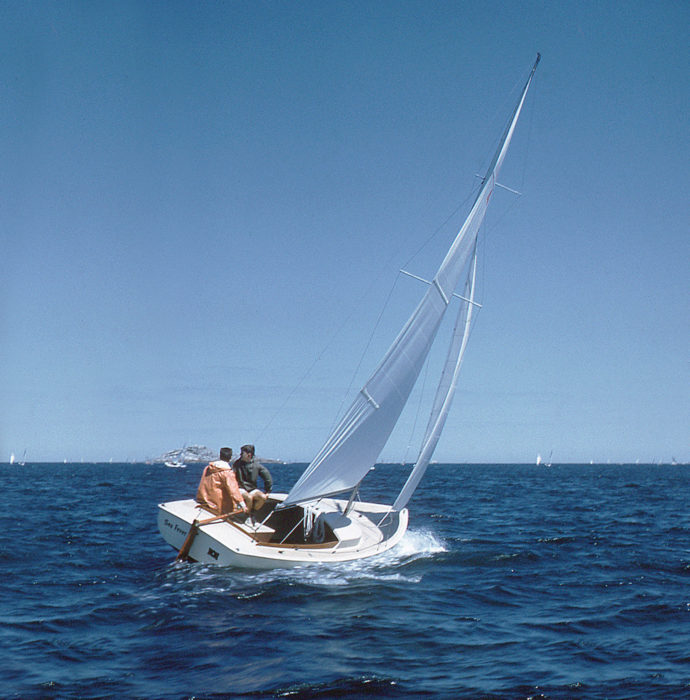 Alan Bell
Alan BellDr. Randal Bell brought the first Rhodes 19, sail No. 41, to Marblehead in the 1950s. Sales of the boat skyrocketed through the 1960s.
O’Day’s foundation years in his Brutal Beast and 110 gave rise to a sailing—and sailing-industry—legend: he would go on to collect national championships in several different classes, including the 210, Firefly, Jollyboat, and International 14. He also won gold at the Pan American Games in 1958, gold again in the 1960 Olympics at Rome in the 5.5-Meter class, and he served in the afterguards of the winning AMERICA’s Cup crews in 1962 (WEATHERLY, designed by Rhodes) and 1967 (INTREPID, designed by Olin Stephens). He founded the O’Day Company in 1958 and built more than 30,000 fiberglass-hulled boats that would bring the sport of sailing into the financial reach of the middle class—and in the process change the face of sailing at Marblehead and beyond. Uncounted kids in Marblehead and elsewhere learned to sail in the company’s Widgeon-class sloop (a Bob Baker–designed 12-footer of refined shape and proportion); Marblehead’s Frostbite fleet sailed in tiddly O’Day Interclubs for many years, and the Daysailer model remains popular on the New England used-boat market to this day. The Rhodes 19, however, has endured in popularity like no other O’Day boat. Most of the one-design fleets at Marblehead have diminished in number since the 1980s, but the Rhodes 19 fleet remains strong.
Facing rising materials costs and a poor economy, O’Day had discontinued production of the Rhodes 19 by 1980. That could have been the end of the class, but its officers kept calm and carried on for the next four years, through fits and starts with new potential builders. In 1984 Stuart Marine, a company set up by a Rhodes 19 sailor, Stuart Sharaga, for the express purpose of building the class, turned out the first of its Rhodes 19s.
Jim Taylor, a Marblehead-based naval architect, developed the production methods and tooling that allowed Stuart to turn out quality boats at a profit. One of these early Stuart boats was displayed at the Corinthian Yacht Club during the 1985 national championship and was roundly applauded by the fleet cognoscenti. Stuart boats did not replace the O’Day ones: although a Stuart model won the nationals in 1995, 1996, and 1997, an O’Day won in 1998, and the two models remain competitive with each other to this day. Kim Pandapas, a former Fleet 5 president and current scorer, noted in a 2010 Marblehead Reporter interview, “The old ones can be restored to peak competitiveness.” Pandapas sails an O’Day-built Rhodes 19, sail No. 982.
The list price of a new Stuart-built keel model is $39,800; classic O’Day examples routinely appear on Craigslist in the $5,000 range, and commonly require new floor timbers, brightwork refurbishing, and hull and deck paint. There is also a long-popular cruising version of the design, called the Mariner; it is fitted with a small cabin rather than the Rhodes 19’s low-profile cuddy. O’Day built many Mariners, and Stuart continues the tradition.
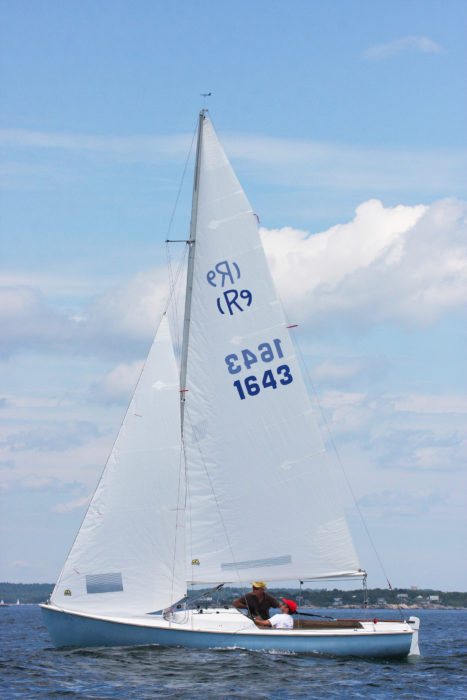 Leighton O'Connor
Leighton O'ConnorThe Rhodes 19 carries 175 sq ft of sail on a 27′10″ mast. An outboard motor of up to 6 hp can also be carried for daysailing.
Unlike some higher-performing one-designs, the Rhodes 19 has comfortable bench seating and, with its varnished mahogany coaming and well-proportioned cuddy, has good protection from spray. Sailing the boat doesn’t require excessive physical exertion, which makes it a level playing field for sailors of all ages. Many teams are composed of husbands and wives; one skipper about five years ago retired from the helm at age 84.
I raced Rhodes 19s as a kid, beginning in the late 1970s. My brother Frank and I would ride our bicycles on Saturday mornings from our home in Salem, Massachusetts, to the Boston Yacht Club in the adjacent town of Marblehead. There, we’d meet our mentor, Dick Welch, a Rhodes 19 sailor, who would assign us to a boat in need of crew. We bounced between the Rhodes 19 and Etchells 22 fleets, mostly, with an occasional foray into the Lightning, 210, or Town Class fleets, until we eventually landed full-time slots in competing gold-hulled Rhodes 19s. Mine was called TRISCUIT and was skippered by Davis Noble. Frank’s was SAFFRON, sailed by the husband-and-wife team of Peter and Debbie deWolfe. With Frank, then 15 years old, as crew, SAFFRON won the nationals in Chicago in 1978. Those were heady days for us, and especially for Frank, with that victory. But it wasn’t until much later that I came to really appreciate the significance and brilliance of the Rhodes 19 as a pure sailboat.
Lately I’ve been lingering on advertisements for used O’Day models. It has been many years since I sailed a Rhodes 19, but the mechanics of sailing this boat are muscle memory for me. In its basic form, the boat is a wholesome daysailer with a form-stable hull and iron-ballasted fin keel—although there is a less-popular centerboard model, too. The off-the-shelf rigging is quite simple, but the fractional rig, along with fine-tweaking with the addition of a mainsheet traveler, twings, barber haulers, cunningham, jib-luff tensioner, and adjustable jib leads—all led to a control console—give incremental speed advantages and keep the competition in this fleet hotter than one might expect.
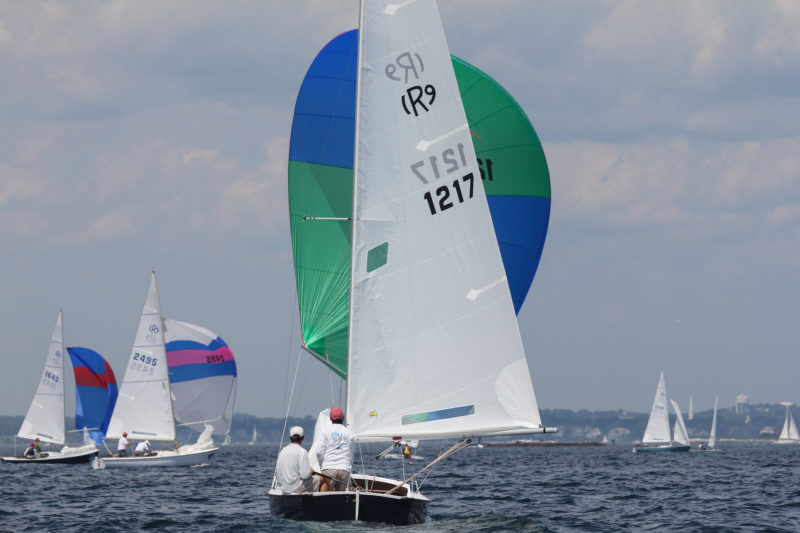 Leighton O'Connor
Leighton O'ConnorThe standard Rhodes 19 rig is quite simple, though numerous sail controls, including a jib-luff tensioner, cunningham, twings, Barber hauler, and traveler can be added to increase competitiveness.
I recall their light-air performance, which was aided by bringing the aftermarket Harken traveler well to windward and easing the mainsheet. Conversely, in heavier breezes the traveler was let down and the sheet strapped in tight, with the boom brought to centerline and the top batten parallel to the boom. Hiking straps along each bench seat allowed us to keep the boat flat in those conditions, though the iron ballast gave plenty of reassurance if we eased up on the effort.
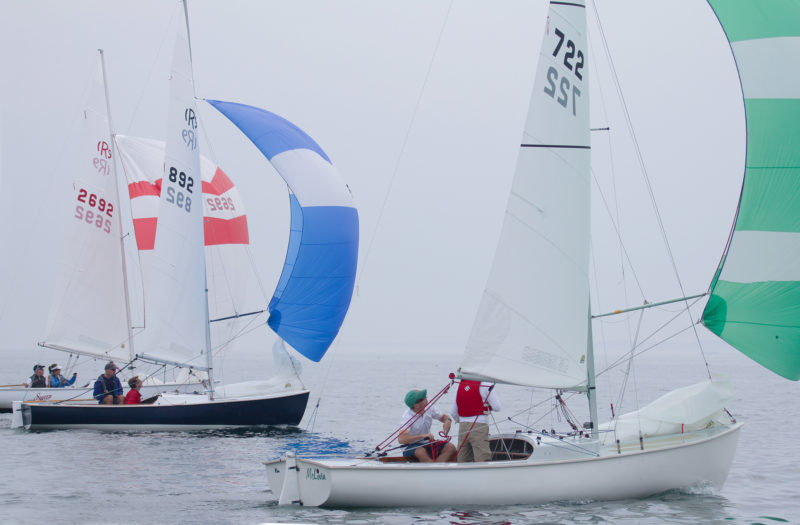 Leighton O'Connor
Leighton O'ConnorThree Rhodes 19s ghost downwind under spinnaker in a regular-season contest of the Marblehead Racing Association.
The competitive boats looked like Harken catalogs. The stock layout had two long molded fiberglass seats that served as flotation chambers, but the added Harken traveler was mounted across these, just ahead of the helm station, dividing the cockpit. The console bar, studded with cam cleats, was typically slung under the after edge of the cuddy, with the sail controls within easy reach of the crew. The foredeck was spacious and the hull relatively stable, making end-for-ending the spinnaker pole, while jibing, a relative breeze. Spinnakers were typically launched and retrieved from the cockpit.
I sailed a different Rhodes 19 during the week in those days, too. This one had been a donation to the sailing camp where I taught for several years, and that boat had not been fitted out for racing. With its simple cockpit layout and sheeting, it provided a great contrast to the tricked-out racing version on which I spent my Saturday afternoons. It could comfortably carry six adults, and I recall one of my colleagues camp-cruising in it a few times with his wife and child. Indeed, a proper boom tent fitted over the cockpit of a Rhodes 19 would really open up the boat’s range.
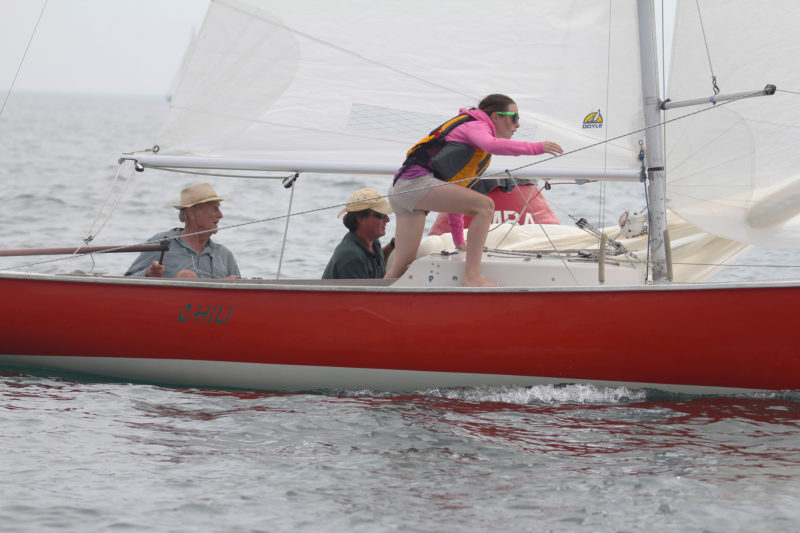 Leighton O'Connor
Leighton O'ConnorOne of the appealing features of the Rhodes 19 is that it does not require excessive physical exertion to be competitive. Some crews are composed of three generations of the same family.
Jim Taylor noted two more reasons for the Rhodes 19’s enduring popularity. First, “the boat is really well suited to intergenerational sailing, so that in addition to the husband-and-wife crews, there are lots of parent-child teams, too.” The second reason he noted is that that these “underpowered 40-or-more-year-old boats with fat bows and bad keels are drawing former college sailors who are accustomed to, and enjoy, sailing boats that are all equally slow. The competition continues right to the finish line.”
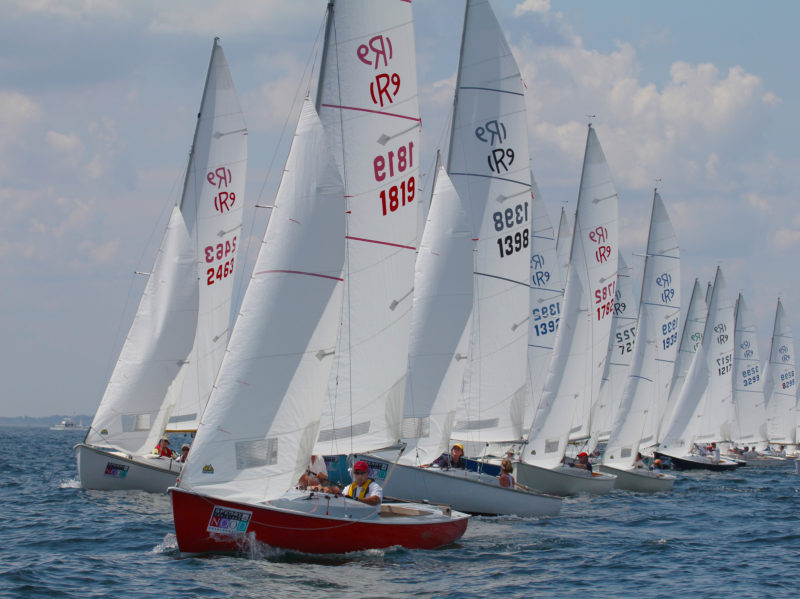 Leighton O'Connor
Leighton O'ConnorThe 2014 NOOD (National Offshore One Design) Regatta at Marblehead, Massachusetts, saw a healthy fleet of Rhodes 19s. The class has flourished at Marblehead for more than 50 years.
The Rhodes 19 remains well represented in Marblehead. In fact, the nationals were held there this past summer; Steve Clancy and Marty Gallagher from the south shore of Massachusetts won the event. And No. 41, the boat that started it all in Marblehead, is back in town. Marblehead resident Peter Sorlien found her located in New York City and for sale on Craigslist.
Jim Taylor, who was instrumental in helping Stuart Marine keep the fleet alive, has a Rhodes 19, too. Sorlien put this fact into perspective: “Here we have one of the world’s leading naval architects, and what boat does he have for himself? A Rhodes 19.” ![]()
Matthew P. Murphy is the editor of WoodenBoat magazine.
This profile originally noted the ballast was lead, not iron, and that Marty Gallagher’s sailing partner was Chris Clancy rather than his brother Steve Clancy. The text above has been corrected and we apologize for the errors. —Ed.
Rhodes 19 Particulars
[table]
LOA/19′ 2″
LWL/17′ 9″
Beam/7′
Sail area/175 sq ft
Weight/ 1325 lbs
Draft, keel version/3′ 3″
Draft, centerboard up/ 10″
Draft, centerboard down/ 4′ 11″
[/table]
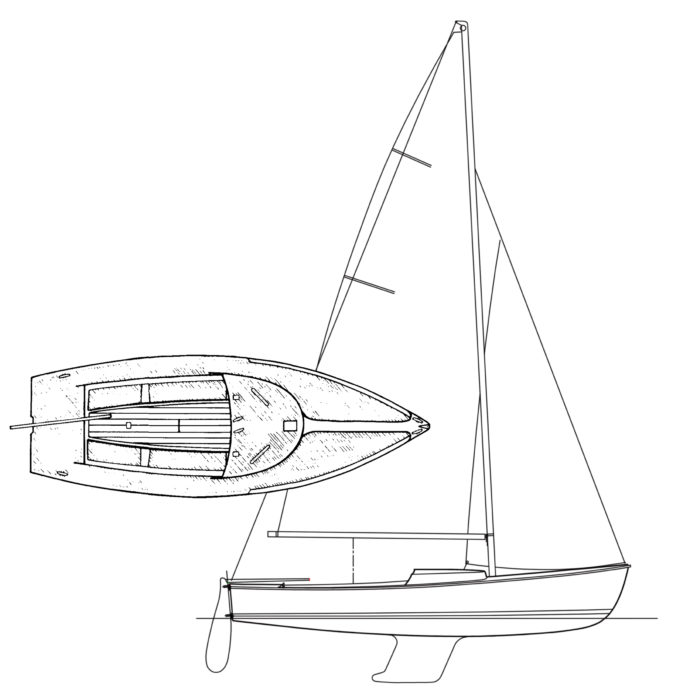 Sail plan by Jim Taylor
Sail plan by Jim Taylor.
The Rhodes 19 is available from Stuart Marine with a full keel for $39,800 or rigged as a centerboarder for $39,600. Used Rhodes 19s are also available via listings on the Stuart Marine website.
Is there a boat you’d like to know more about? Have you built one that you think other Small Boats Magazine readers would enjoy? Please email us!
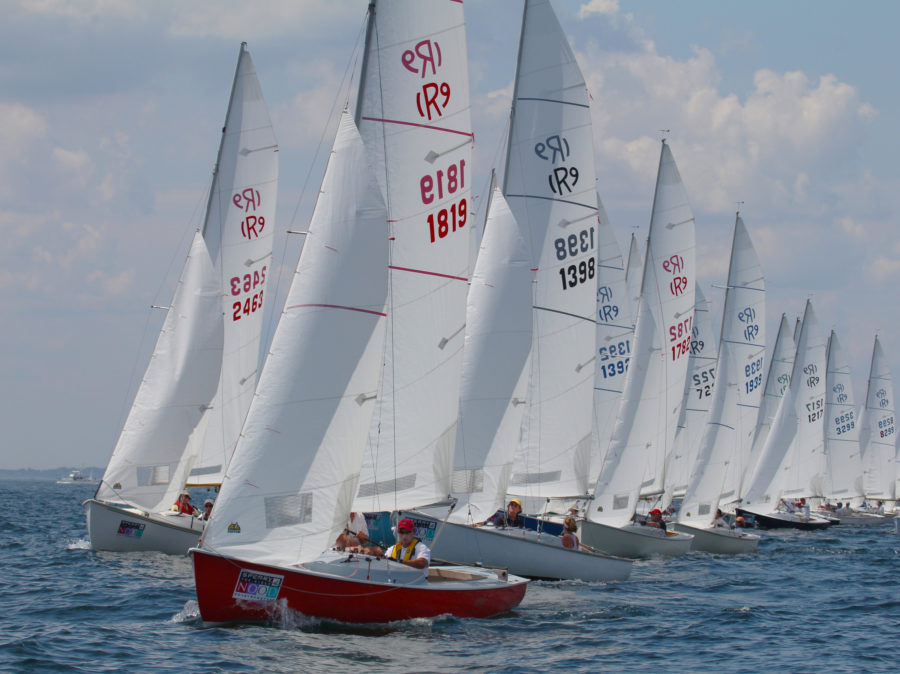
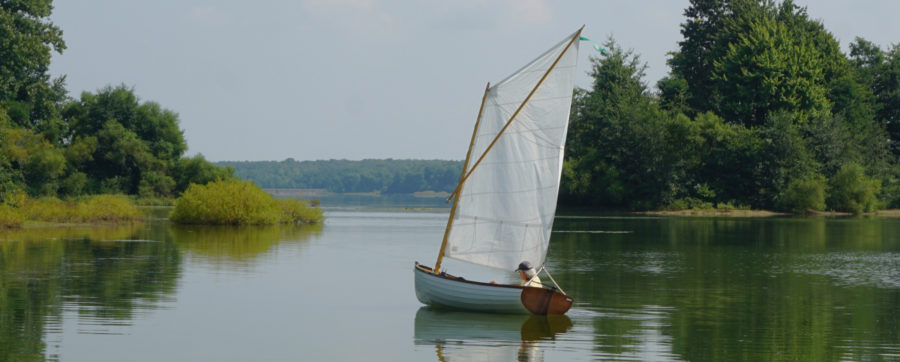
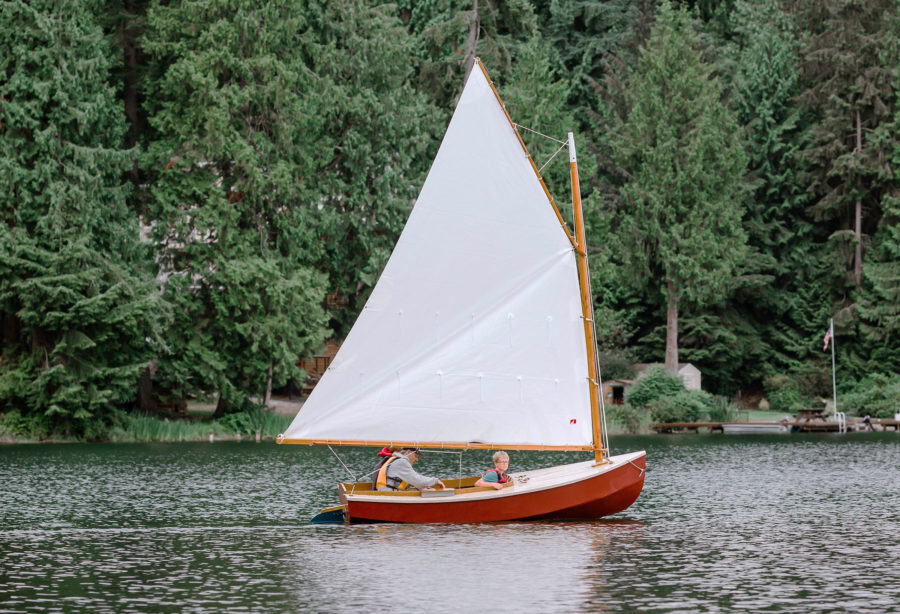
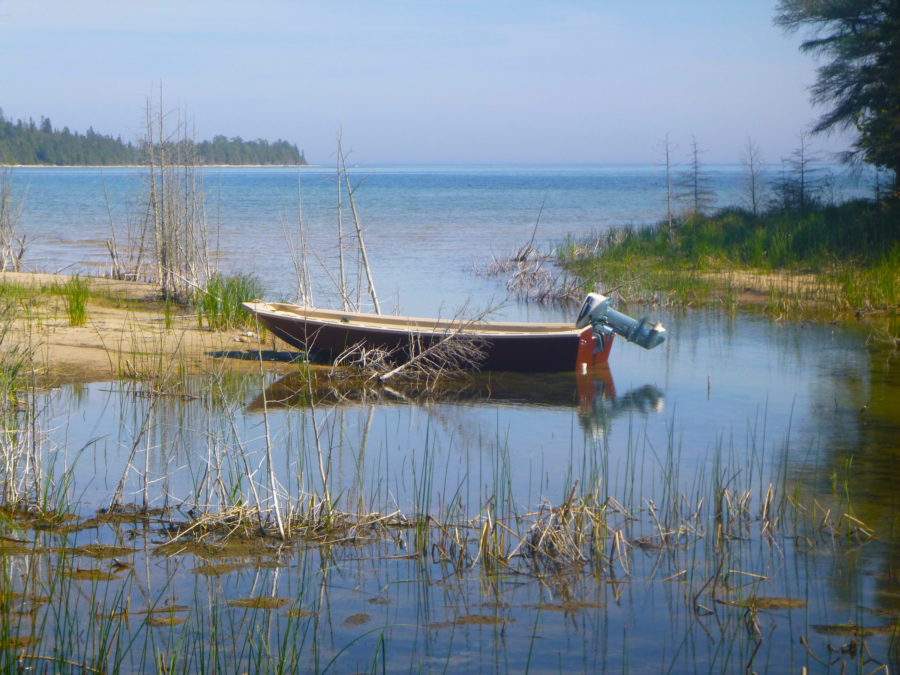
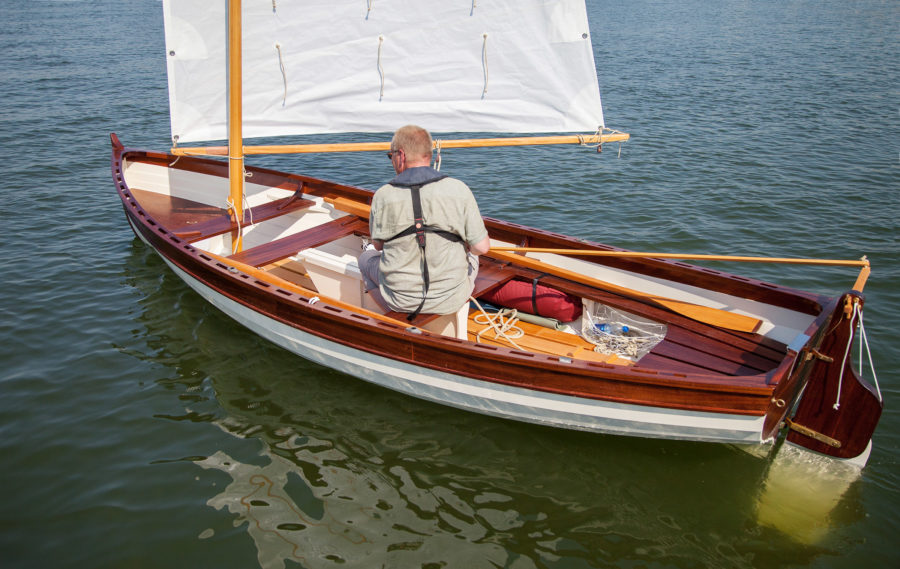
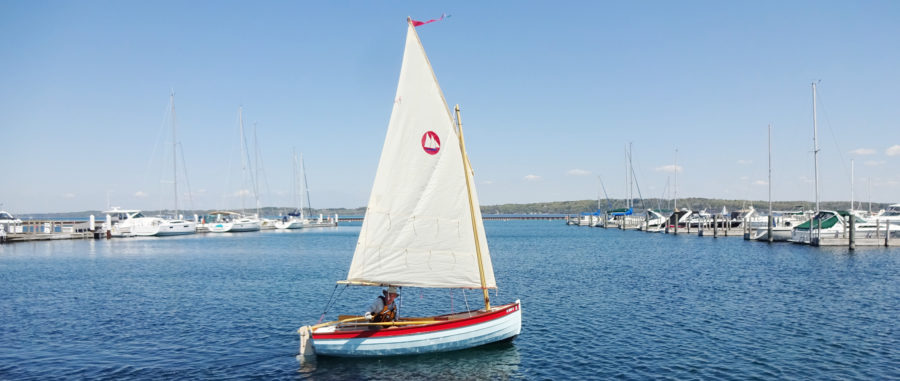
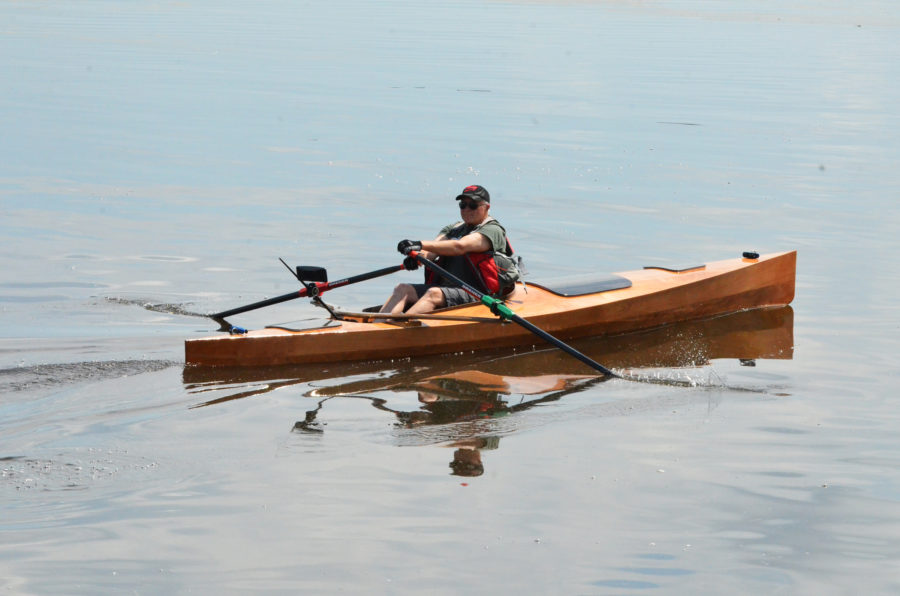
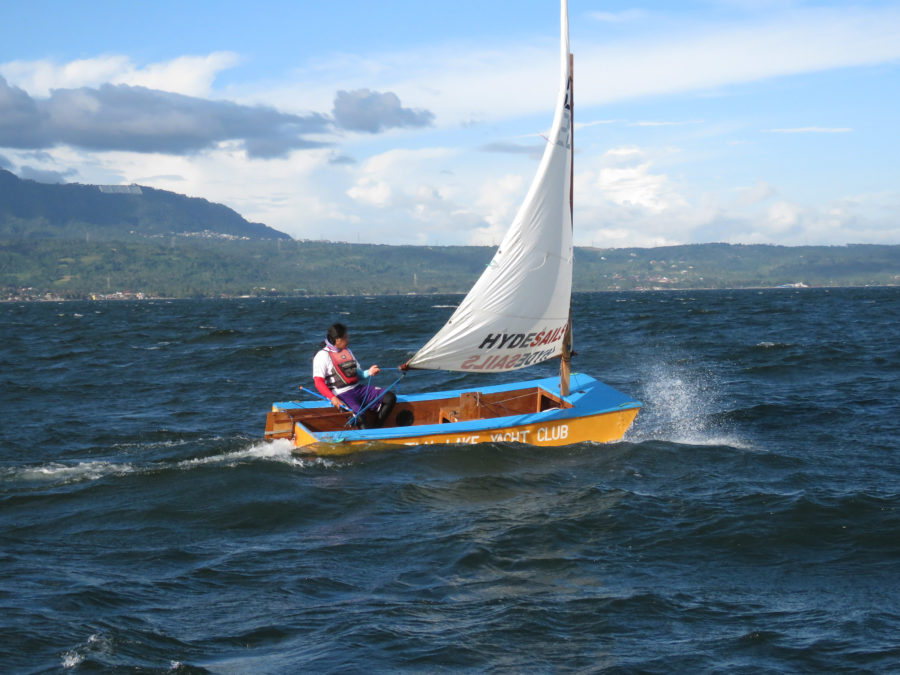
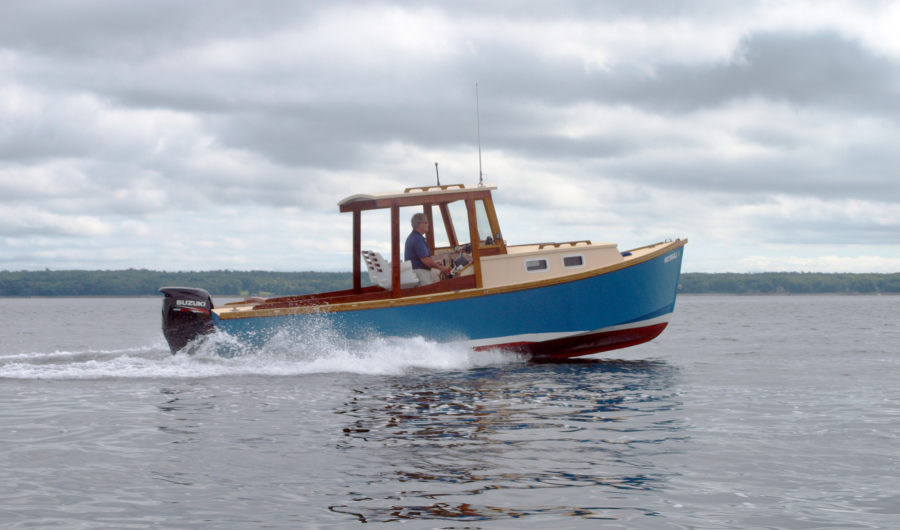
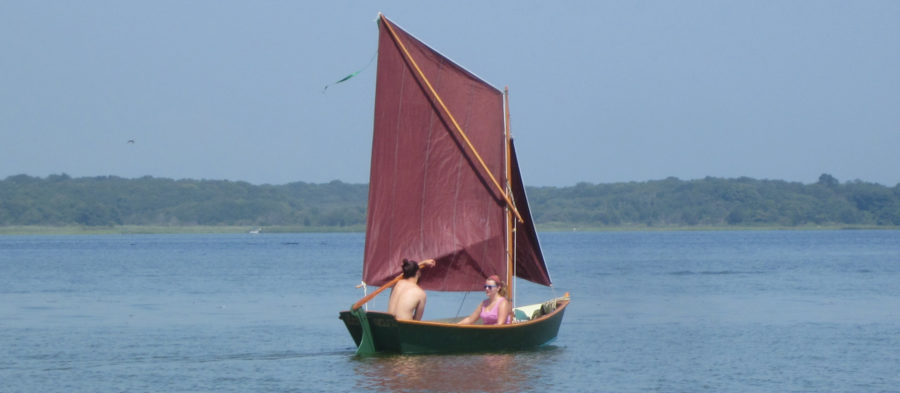
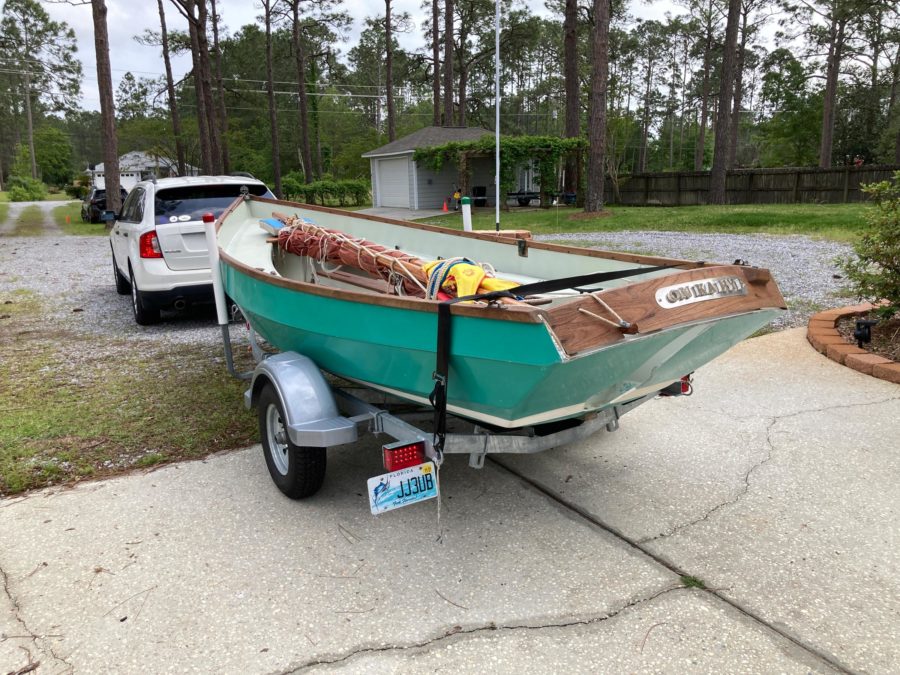
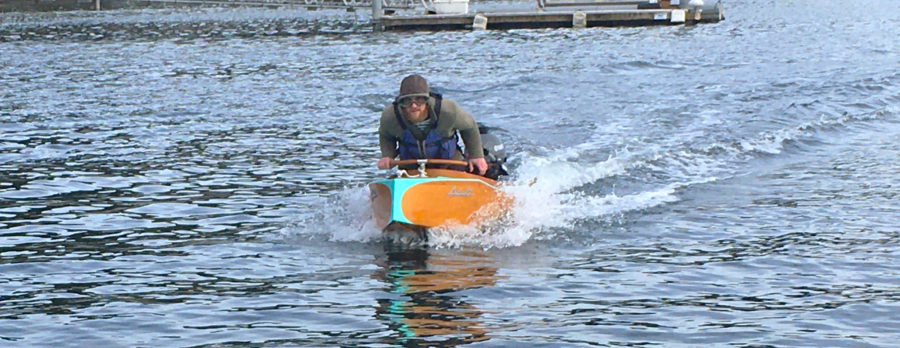
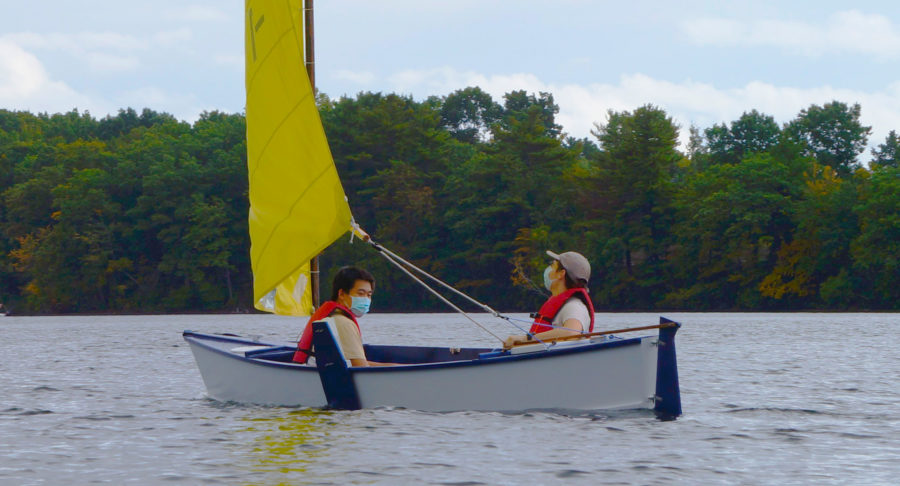
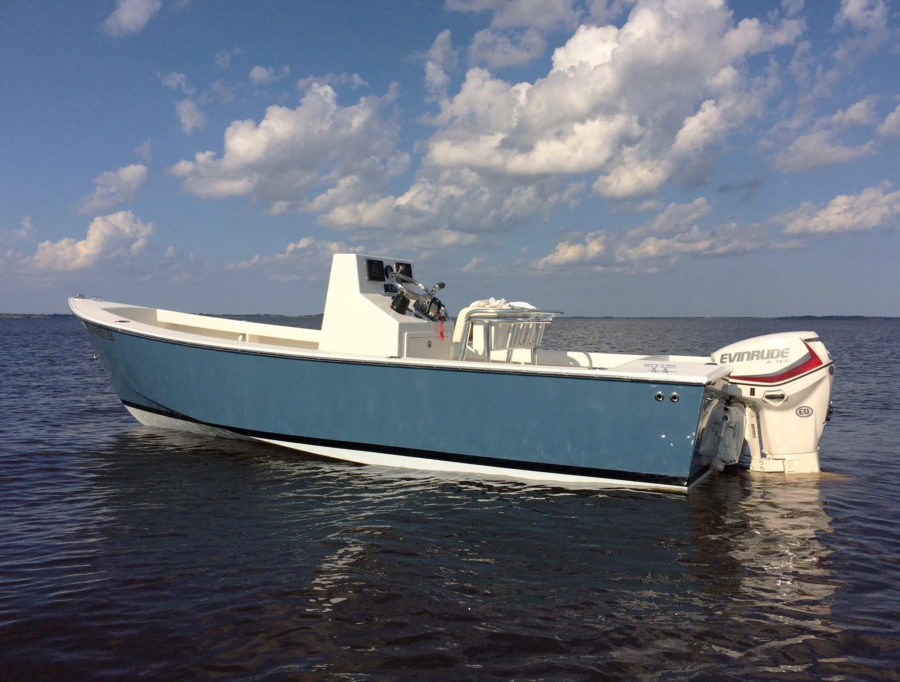
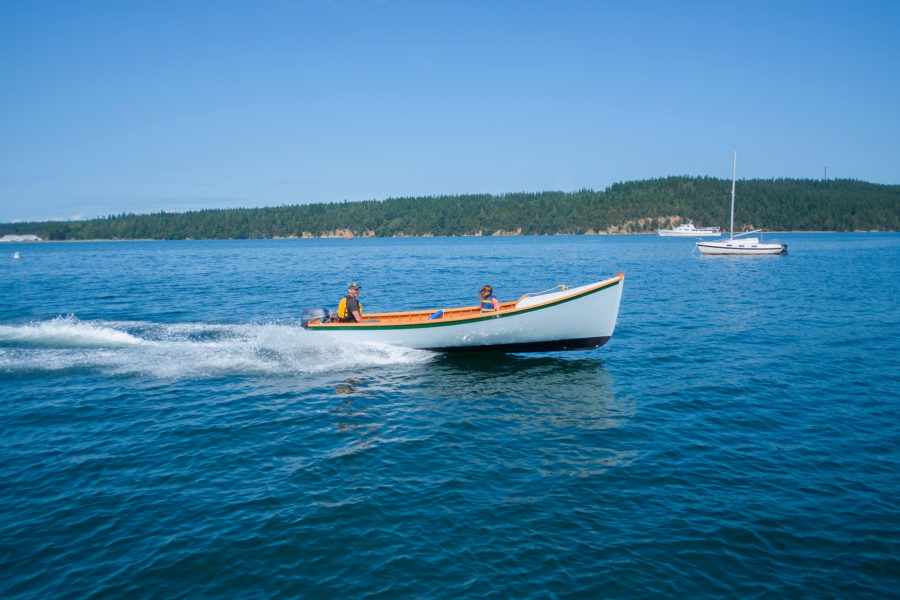
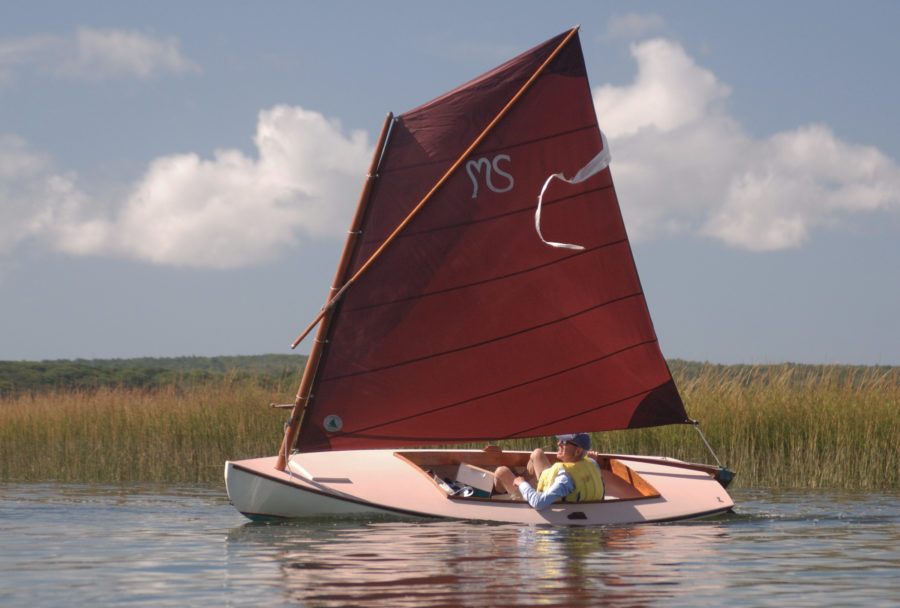
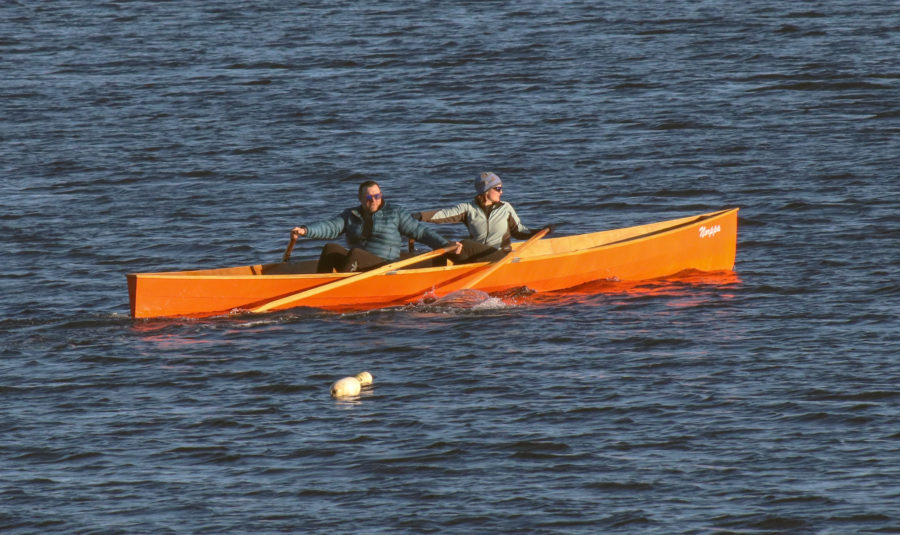
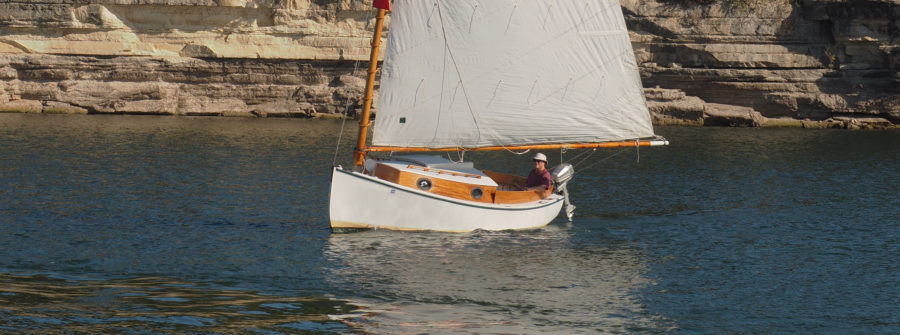
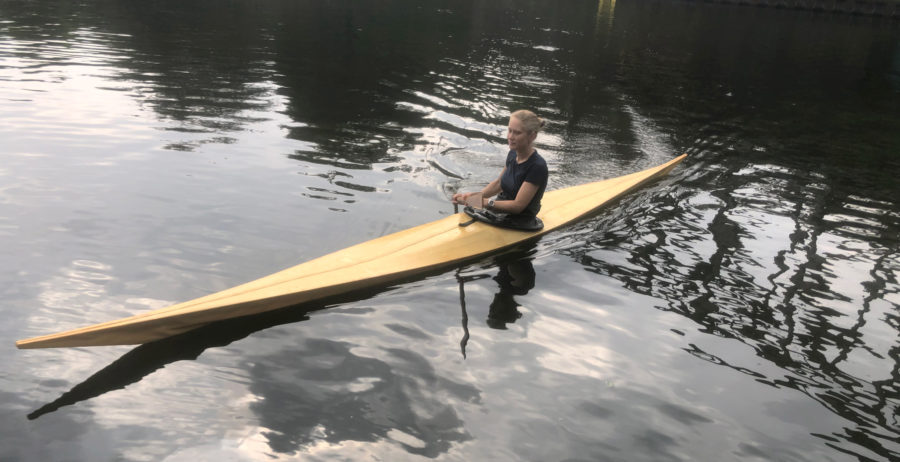
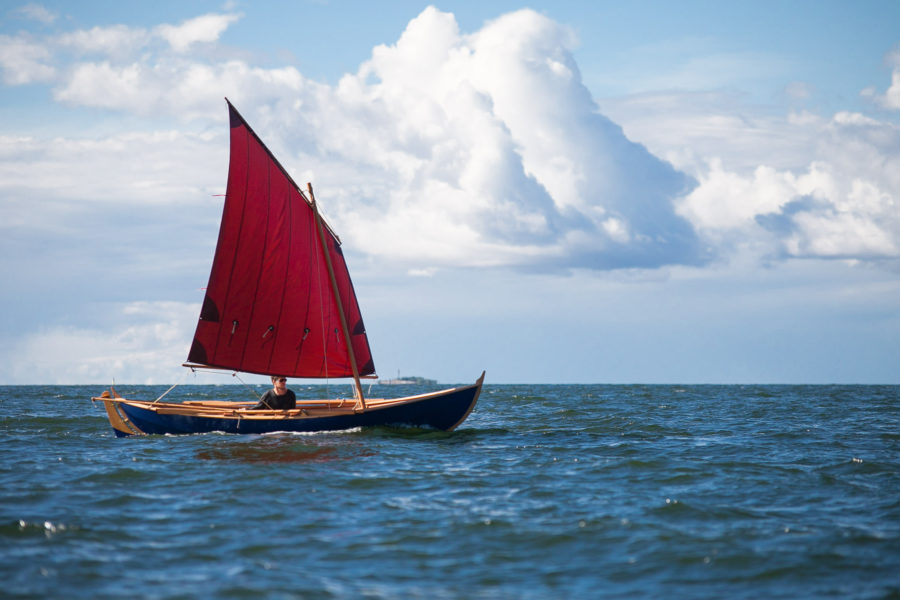
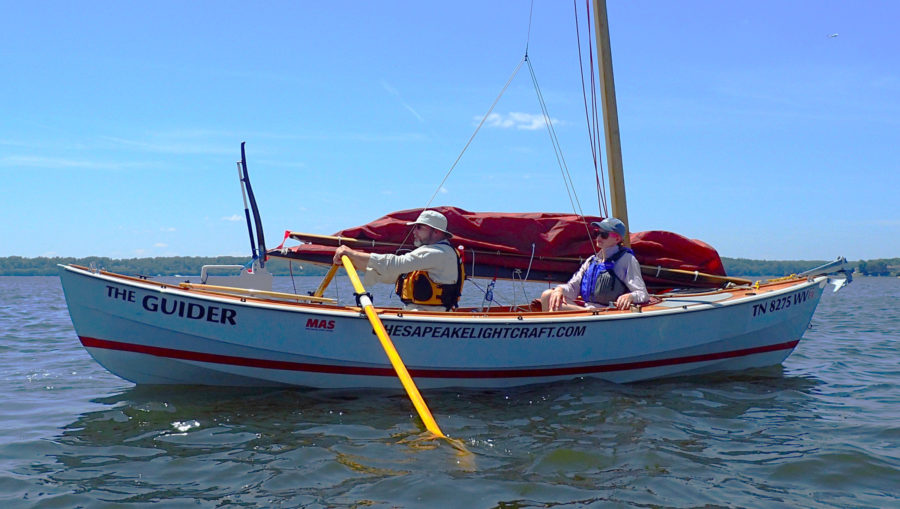
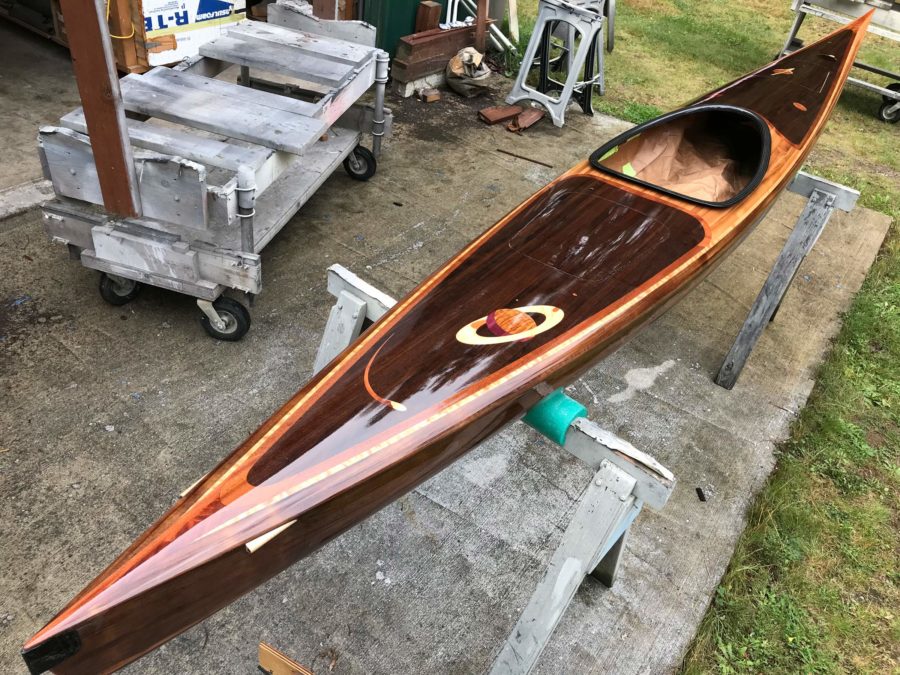
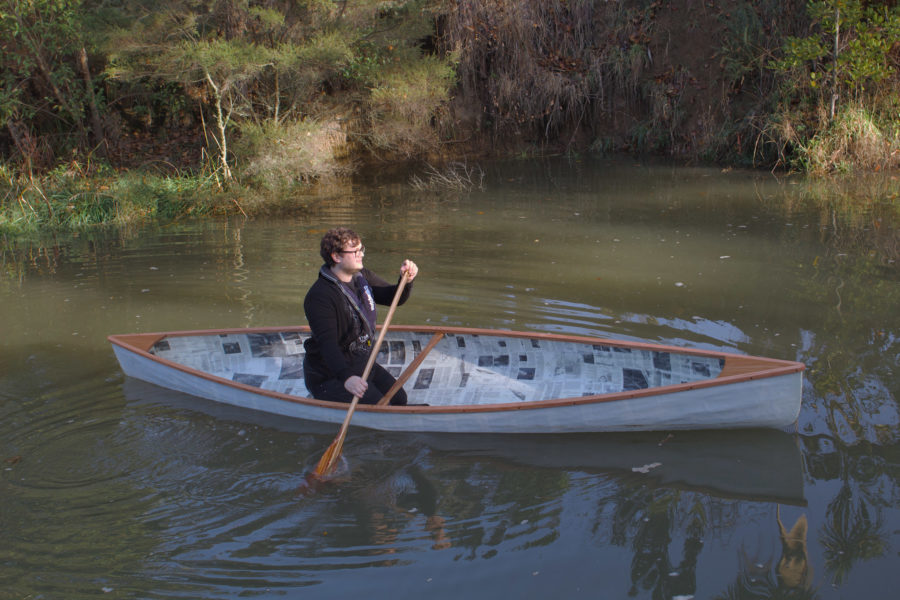
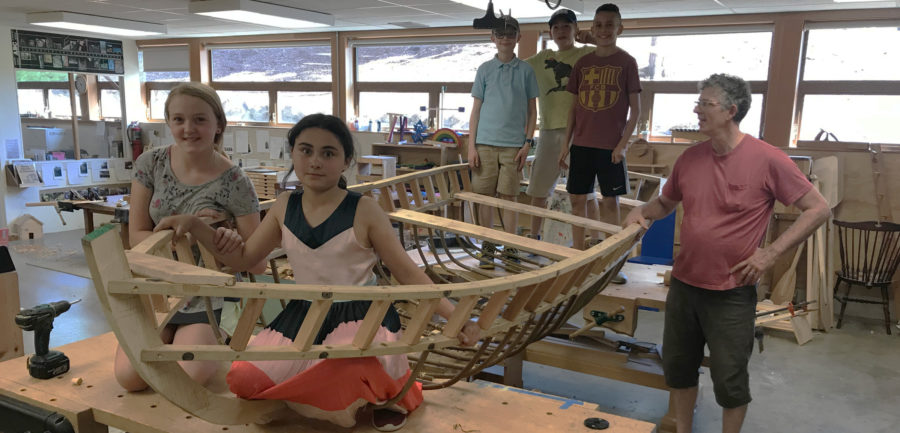
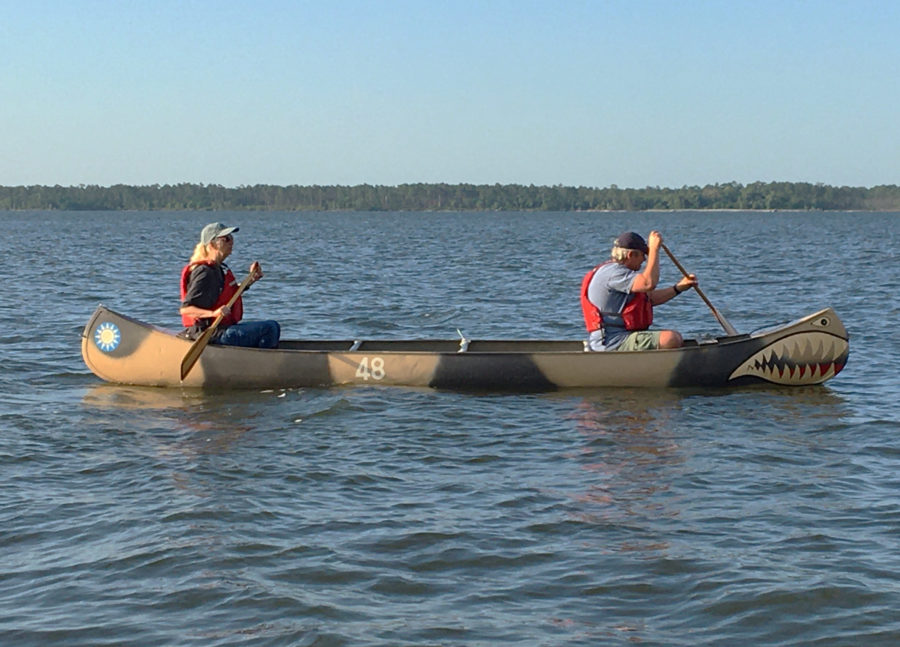
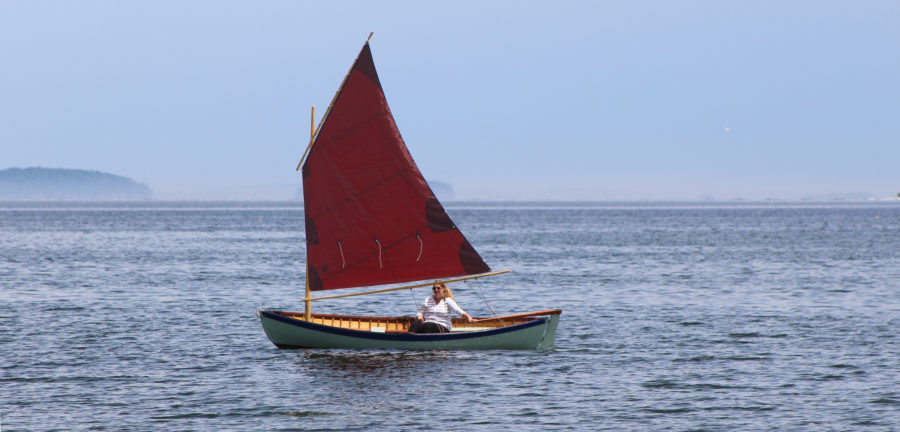
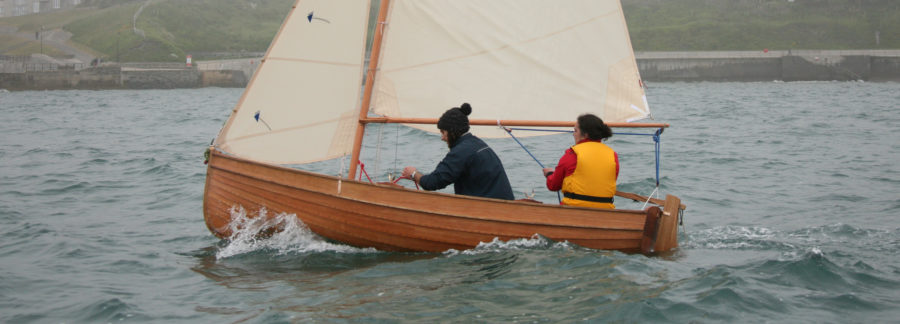
Very enjoyable and informative.
Thank you
Steve Clancy was actually the skipper of the Rhodes 19 2021 National Championship. I was his crew. His brother, Chris Clancy, competed with his own boat.
Marty Gallagher
Thanks, Marty, for providing the correct identity of your skipper. The correction has been made to the text.
—Ed.
We were helping run the Navy Regatta in Corpus Christi, Texas, back in 1995 and Skipper’s friend Anne entered her Rhodes 19. For the regatta it was a requirement that all boats carry at least one military crew on board. We assigned our friend Chuck to Anne’s boat; Chuck had experience sailing from his time at the Naval Academy and several Newport-Bermuda races. Anne and Chuck won the overall event, from a fleet of over 50 boats!
Just build a dodger and boom tent for a full-keel Rhodes 19 that now lives in St.Thomas and I sail an O’Day Mariner 2+2
What a great article. It would interesting to hear about the current Rhodes 19 production team led by owner Dave Whittier in Maine.
I am in the process of buying a Mariner 19 from Dave Whittier at Stuart Marine. Spoke to him the other day. He was on a ski lift in Utah. Said the powder was good. Too funny. I’ll be bringing the boat to Lunenburg, Nova Scotia where the missus and I are relocating to. Twenty years on the West Coast, it’s time to get closer to New England my birthplace. Now, I have the boat, I should probably find a house to live in. I think the v-berth may be too tight for a lengthy stay. Had to get the boat first, it’s important to set one’s priorities, eh. Happy sailing everyone!
Question to the readership…
Rhodes 19 centerboard or Oday DSII? Pros/Cons?
– Which is more seaworthy under all conditions?
Thanks,
John in VA Beach, VA